One of my pleasures in travelling, when I can do it, is to match my route with that of a historical character. When my boy, Alexander, was young, I took him on several journeys in pursuit of his famous namesake, the Great – travelling from Macedonia (Chap One: the Origins) through Western Turkey (Chap 2: Liberating the Hellenic States) and even on to Pakistan (Chap 34: The End of the Known World) where we trekked over the Hindu Raj and Pamirs. Our route on that trip also coincided with another historical path, that of the Victorian geographer, George Hayward, who was murdered by the villagers of Darkot in Chitral in 1870: we celebrated the 128th anniversary of his death by challenging the descendants of his assassins to a game of cricket – which they won by one run.
In more recent years I have made fewer historical match-making excursions , tending to spend my holidays in my house in Italy. So I was not expecting much when last autumn I went on a business trip to New Zealand.
The one chance to get away from the inside of government offices and meetings with companies was a weekend in the Malborough Sounds – that maze of creeks and islands at the northern tip of the South Island. Old friends – John and Avenal Mckinnon – had a holiday house on one of the islands. John and I shared a personal bond known only to those who have sat in a room together and recited the sound ‘Ma’ a hundred times in four separate tones – the first lesson of any student learning Chinese. It had been some years since he had been New Zealand’s Ambassador in Beijing and I was looking forward to catching up with him. I was also keen to see their son, Sasha, whom I had known all his life. I had attended his christening nearly 30 years before in St John’s Cathedral in Hong Kong and more recently his wedding to Rhiannon in the same place. Malborough Sounds itself had a lure for me: it had been to the Outward Bound School there that I had sent my own two children in their gap year before university.
Please click on thumbnails below to scroll through the gallery:
- The Malborough Sounds
- Queen Charlotte’s Sound
- Double Bay
- The McKinnon family at home in Double Bay
- With Sasha Mckinnon and Daphne above Double Bay on the path to Cook’s Lookout
- View from Cook’s Lookout
I was expecting a relaxing time reminiscing over a glass or two of fine New Zealand wine, and taking walks in a landscape of great natural beauty.
Well I got that, all right. Double Bay, where the McKinnons had their comfortable bungalow, was cut off from the rest of the world by the wide waters of Queen Charlotte Sound. It could only be reached by motorboat. Once there, we were alone among thick woods leading to high hills behind us and a rocky promontory between two stony beaches, inhabited only by tiny oystercatchers– and it was idyllic. The sunset over the sound, the shapes of far off islands fading into violet twilight, had a beauty that might even have cheered up Robinson Crusoe, though he, poor fellow, did not have the benefit of John’s cellar.
It was as we were sipping a glass of Oyster Bay before dinner that I congratulated John on having discovered such paradise in the middle of nowhere.
“It’s not the middle of nowhere,” he replied. “Believe it or not, this bay and the ridge above it was the setting for one of the most important geographical discoveries ever made – maybe the last important discovery in the mapping of the Earth.”
“You’ll have to explain that one,” I said.
And he did, with the aid of a huge volume of Captain Cook’s Journal of His First Voyage.
The key date was January 23rd 1770. Captain Cook had sailed his ship, the Endeavour, across the Pacific with the intention of mapping the Great Southern Continent, which, so the wisdom of the time had it, incorporated Australia and stretched eastwards – but crossing the great expanse of water on their way they saw no signs of a continent or ‘Mainland’ . Arriving at the North Island their first thought was that New Zealand was a missing part of the main, but when they sailed southwards they found themselves in the confusion of the Sounds. This intrigued them. The only other explorer who had been to New Zealand was the Dutchman Abel Tasman who had sailed along the west coast of both islands without confirming whether the land eastwards led to more sea or linked to the Southern Continent. He did not identify the passage between North and South Island as a strait, but marked it on his map as an inlet or bight. The possibility did occur to Cook, however, that this might be a through passage leading to the ‘Eastern Sea’ ie the Pacific, in which case New Zealand would not be part of any continent but an island far away from anywhere – and this would put in doubt the whole concept of a Southern Continent. On the 22nd January, Captain Cook, with two of his scientists, including the future President of the Royal Society, the botanist Joseph Banks, set off in small pinnace from their anchorage in Queen Charlotte Sound. The Captain’s journal and Banks’s diary tell the story:
Extract from Cook’s Journal (January 1770)
MONDAY 22nd. PM and in the night had Variable light airs and Calms, AM had a fresh breeze Southly and Clowdy weather. In the morning the people were set about the necessary business of the Ship and I set out in the Pinnace (accompanied by Mr Banks and Dr Solander) with a view to examining the head of the inlet, but after rowing between 4 and 5 Leagues up it and finding no probability of reaching or even seeing the end the wind being againest us and the day already half spent we landed at noon on the SE side in order to try to get upon one of the hills to View the Inlet from thence.
TUESDAY 23rd. PM Winds Southerly a fresh breeze. Agreeable to what is mentioned above I took one man with me and climed to the top of one of the hills but when I came there I was hindred from seeing up the inlet by higher hills which I could not come at for impenetrable woods, but I was abundantly recompenced for the trouble I had in assending the hill, for from it I saw what I took to be the Eastern Sea, the main land which lies on the SE side of this inlet appeared to me to be a narrow ridge of very high hills and to form a part of the SW side of the Strait. The land on the opposite side seem’d to trend away East as far as the Eye could see, to the SE appear’d as oppen sea and this I took to be the Eastern. I likewise saw some Islands lying on the East side of the Inlet which before I had taken to be part of the Main land. As soon as I had decended the hill and we had refreshed our selves we set out in order to return to the Ship and in our way pass’d through and examined the Harbours, Coves &ca that lay behind the Islands above mentioned. In this rout we met with an old Village in which were a good many houses but no body had lived in any of them lately, we likewise saw a nother that was inhabited, but the day being far spent so that we had not time to go to it but made the best [of] our way to the Ship which we reached between 8 and 9 oClock. In the night had much rain with Clowdy hazey weather which continued by intervils untill noon.
Extract from the Endeavour journal of Sir Joseph Banks
1770 January 22.
Made an excursion today in the pinnace in order to see more of the Bay.
While Dr Solander and Myself were botanizing the captn went to the top of a hill and in about an hour returned in high spirits, having seen the Eastern sea and satisfied himself of the existence of a straight communicating with it, the Idea of which had Occurd to us all from Tasmans as well as our own observations.
“Well, that was very interesting,” I told John, “but how did it prove that there wasn’t a Southern Continent?”
“Well, it didn’t exactly, but what he saw proved that New Zealand was not part of it, and his later voyages confirmed that one didn’t exist. That was the last piece of the puzzle as far as the mapping of the world was concerned. It was that climb to the top of the hill that was the first evidence to Cook that perhaps the Continent was a flight of the imagination and the mapping of the world, bar a few odd archipelagos, was actually essentially complete.”
“And he climbed the hill from this bay?” I asked.
“That’s what Cook’s editor Beaglehole thought, though some opinion has it that they set off from Umuwheke Bay, which is just down the coast a little bit. Anyway, Cook’s Lookout, where he made his observations is directly above us and just to the left. You can climb there tomorrow morning– from here!” he finished triumphantly. “Oh, by the way, the discrepancy in dates between Cook’s entry and Banks’s entry may be because one of them did not take account of what we now call the date line as Banks’ 22nd must correspond to Cook’s 23rd.”
“Thank you, I’m glad we sorted that one out,” I said. “But Captain Cook and Joseph Banks spent a night on this beach? This place is important?”
“I take my stand that in world historical terms, Arapawa Island is immensely important,” said John, “and not just because two generations of Williamses have visited us here!”
At that point Avenal and Rhiannon called us to supper. Next morning, guided by Sasha and Rhiannon and their dog Daphne, I climbed the path to the Lookout, my heart bursting with pleasure and pride that I was walking in the footsteps of Captain Cook…
Unless he actually climbed up from Umuwheke!
Discovering New Zealand
Please click on thumbnails below to scroll through the gallery:
- Portrait of Abel Tasman
- Tasman’s voyages
- Cook’s map of New Zealand
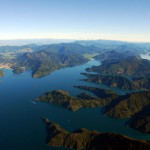
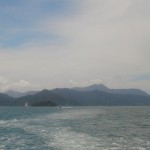
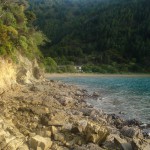
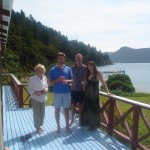
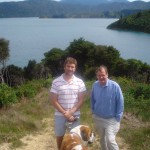
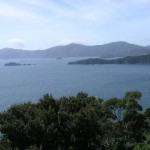
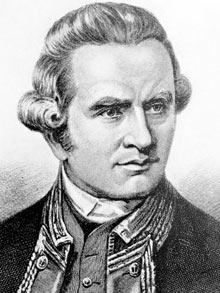
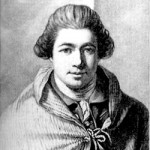
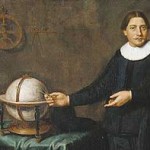
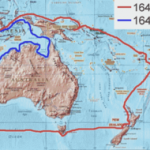
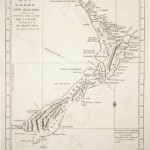


Dear Mr Williams,
I came on this while googling for news of Sasha McKinnon, Avenal and John’s son. It was good to see his picture. Avenal and I were friends and we often visited when our children were young. However we came to Sydney in 1986, and more or less lost touch. Sasha and our daughter Beth were friends in those days, and his photo is in a birthday party picture we have just been cogitating about. So, what has happened to Sasha I wondered, what is he doing with his life, and where is he. Last I heard from Avenal he’d been mugged in Central Park, I think.
Are Avenal and John in NZ these days? Are they well? At the same house? If so, I must try and catch up with them next time I’m in Wellington. It’s been a bit of a thrill finding your site here. I’ll pass it on to Beth. Memories.
All the best
Sue Taylor